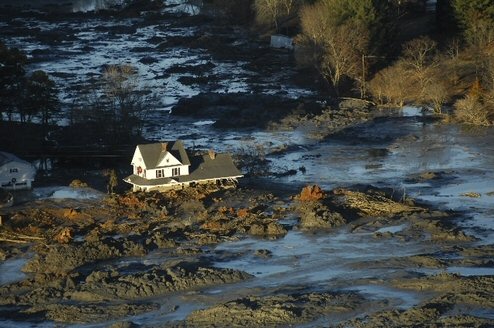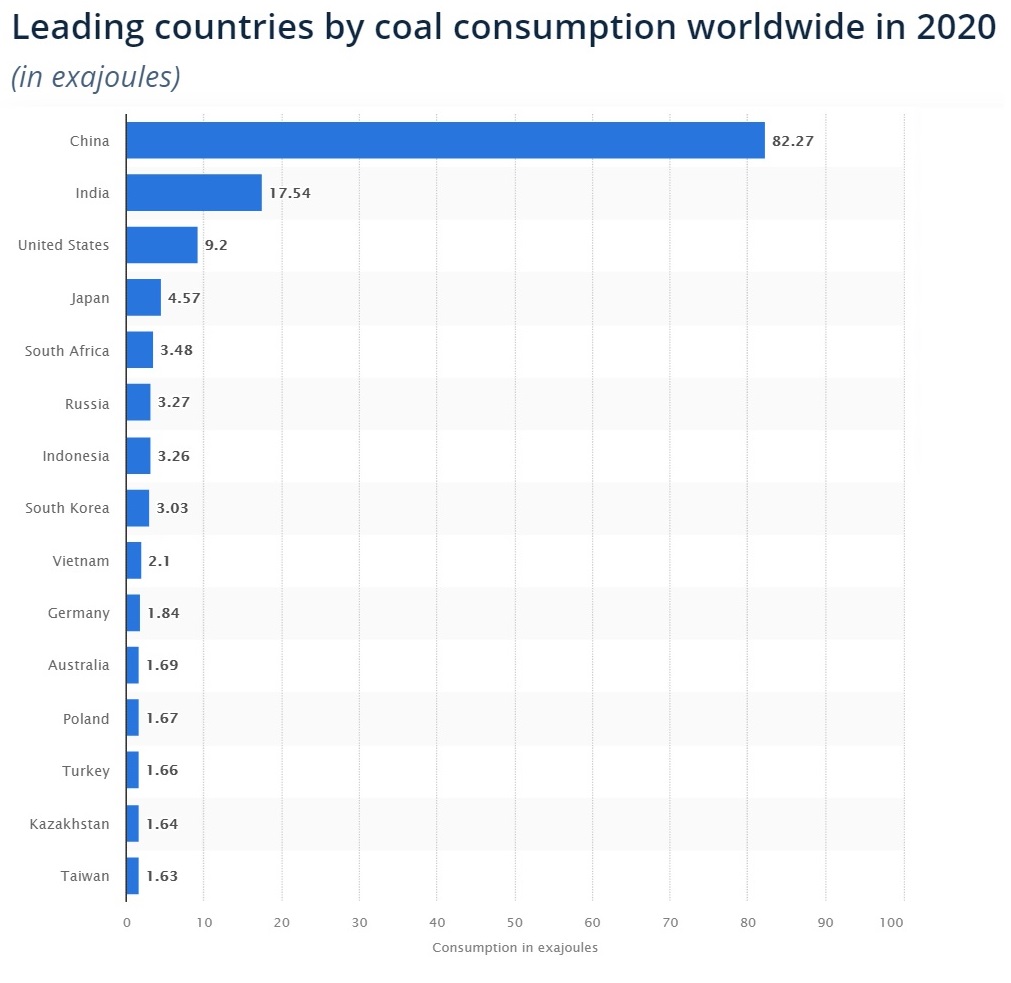Coal is extracted from the ground by coal mining, either underground by shaft mining, or at ground level by open pit mining, and its extraction and use are directly related to a number of adverse health and environmental consequences, including:
• 2,800 deaths from lung cancer and black lung disease in the United States alone;
• Millions of tons of waste products such as dust, fly ash, bottom ash, and flue-gas desulfurization sludge that contain mercury, uranium, thorium, arsenic, and other heavy metals;

• Contamination of land, groundwater and waterways due to mining and spills such as the Kingston Fossil Plant coal fly ash slurry spill;
• Subsidence above tunnels;
• Uncontrollable coal seam fires which may burn for decades, centuries or millennia, as in Australia;
• Coal-fired power plants without effective fly ash capture systems are one of the largest sources of anthropogenic background radiation exposure.
Coal is the largest anthropogenic emitter of carbon dioxide in the atmosphere, a greenhouse gas that causes global warming and climate change. A coal-fired power plant emits around 2,000 pounds of carbon dioxide for every megawatt-hour generated, almost double the carbon dioxide released by a natural gas-fired electric plant.

Today China is the world’s largest producer and consumer of coal in the world, and accounts for almost half of the world’s coal consumption. Coal supplied 70 percent of China’s total energy consumption of 90 quadrillion British Thermal Units (BTUs), but the International Energy Agency (IEA) projects coal’s share of the total energy mix to fall to 59 percent by 2035 due to anticipated higher energy efficiencies and China’s stated goal to reduce its carbon intensity (carbon emissions per unit of GDP). Even so, absolute coal consumption is expected to double over this period, reflecting the large growth in total energy consumption. But coal-producing nations are equally responsible because they supply China with much of the coal it uses.
In 2011 a study determined that world proved reserves of coal would last 112 years at that year’s rate of production. However, according to the World Resources Institute, nearly 1,200 new coal-fired power plants are planned across the globe with a total proposed capacity of 1.4 million megawatts. China and India account for 76% of the proposed plants, but as pressure mounts to phase out nuclear power after the 2011 Fukushima Daiichi disaster, Japanese coal imports are likely to continue to grow as well.
In sum, despite great technological advances, mankind continues to depend on fossil fuels for most of its energy needs, unchanged from thousands of years ago. No nation has yet announced, much less committed, to a realistic, feasible plan to phase out their use. On the contrary, the world’s population will to grow to 9 billion by 2050; inevitably, that will cause an increase in the respective rates of contamination of the environment and depletion of fossil fuel reserves.
Our planet has a fever. It’s getting worse, and the trend will continue unless we do whatever it takes to redress it. Thomas Jefferson once wrote that “by usufruct, the earth belongs to the living.” There is no one but us to collectively implement the drastic but feasible steps that will be required to do so.
This is a concrete, cost-effective proposal to substitute hydrogen for coal to simultaneously generate electricity, create an otherwise unobtainable new source of pure water, regardless of location and impervious to drought and climate change, and eliminate the number one source of air pollution in China. The United States would produce the hydrogen exclusively and profitably by electrolysis of seawater using solar power only, with zero carbon dioxide emissions.